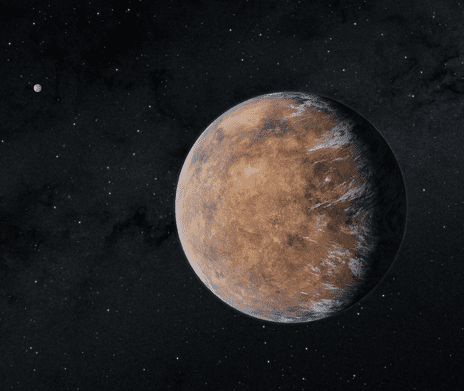
If you’re an astronomer, it’s always nice to find an Earth-sized planet that could harbor life. It’s even nicer finding two in the same star system. NASA’s top exoplanet hunter, the Transiting Exoplanet Survey Satellite (TESS), recently found a second planet orbiting inside of TOI 700’s habitable zone (TOI stands for “TESS Object of Interest”). Both are the size of our own blue dot and could retain liquid water. The new find, dubbed “TOI 700 e,” is 95 percent of the Earth’s size and most likely rocky, according to astronomers.
Researchers had already found three other planets in this system. They were given the names TOI 700 b, c and d. Planet d also orbits within the habitable zone. To discover TOI 700 e, however, scientists required an additional year of TESS observations. TOI is a cool M dwarf star located around 100 light-years away in the Dorado constellation.
“This is one of only a few systems with multiple, small, habitable-zone planets that we know of,” said Emily Gilbert, a postdoctoral fellow at NASA’s Jet Propulsion Laboratory in Southern California who led the work. “That makes the TOI 700 system an exciting prospect for additional follow-up. Planet e is about 10% smaller than planet d, so the system also shows how additional TESS observations help us find smaller and smaller worlds.”
The planets orbit their parent star in a vastly quicker time than we orbit our Sun. TOI e makes its round every 28 days. If TOI d, the other Earth-sized body, harbored life, they would celebrate New Year’s every 37 days. TOI 700 b, the planet closest to the star, is about 90 percent the size of Earth and circles the star once every 10 days. TOI 700 c is over 2.5 times the size of Earth and orbits every 16 days. These planets are likely tidally locked, which means that they rotate only once per orbit, so that one side always faces the star, just as one side of the Moon always faces Earth. It’s still up for debate at this point as to whether or not TOI e is tidal locked or not.
Approximately every 27 days, TESS monitors large swaths of the sky, known as sectors. This allows the satellite to track changes in stellar brightness caused by a planet passing in front of its star as seen from Earth, an event known as a transit. Beginning in 2018, the mission employed this strategy to observe the southern sky before shifting its focus to the northern sky. It returned to the southern sky for further observations in 2020. The additional year of data allowed the team to refine the initial planet sizes, which are approximately 10 percent smaller than the initial calculations.
“If the star was a little closer or the planet a little bigger, we might have been able to spot TOI 700 e in the first year of TESS data,” said Ben Hord, a doctoral candidate at the University of Maryland, College Park and a graduate researcher at NASA’s Goddard Space Flight Center in Greenbelt, Maryland. “But the signal was so faint that we needed the additional year of transit observations to identify it.”
A follow-up study of the TOI 700 system with space- and ground-based observatories is ongoing and may yield further insights into this rare system.
“TESS just completed its second year of northern sky observations,” said Allison Youngblood, a research astrophysicist and the TESS deputy project scientist at Goddard. “We’re looking forward to the other exciting discoveries hidden in the mission’s treasure trove of data.”









